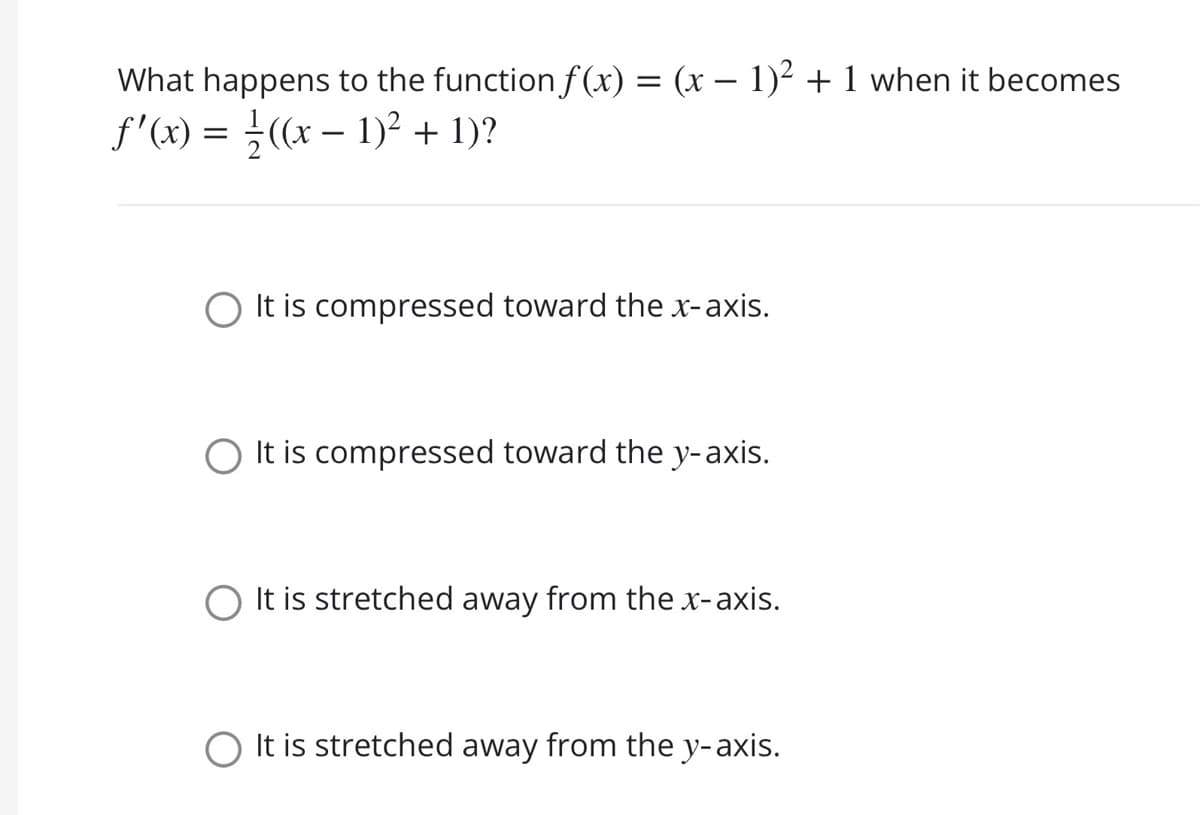What happens to the function f (x) = (x – 1)² + 1 when it becomes f'(x) = ((x – 1)² + 1)? O It is compressed toward the x-axis. It is compressed toward the y-axis. O It is stretched away from the x-axis. It is stretched away from the y-axis.
What happens to the function f (x) = (x – 1)² + 1 when it becomes f'(x) = ((x – 1)² + 1)? O It is compressed toward the x-axis. It is compressed toward the y-axis. O It is stretched away from the x-axis. It is stretched away from the y-axis.
Trigonometry (MindTap Course List)
10th Edition
ISBN:9781337278461
Author:Ron Larson
Publisher:Ron Larson
ChapterP: Prerequisites
SectionP.6: Analyzing Graphs Of Functions
Problem 6ECP: Find the average rates of change of f(x)=x2+2x (a) from x1=3 to x2=2 and (b) from x1=2 to x2=0.
Related questions
Question
Need to know if it’s A B C or D

Transcribed Image Text:What happens to the function f(x) = (x – 1)² + 1 when it becomes
f'(x) = }((x – 1)² + 1)?
It is compressed toward the x-axis.
It is compressed toward the y-axis.
O It is stretched away from the x-axis.
It is stretched away from the y-axis.
Expert Solution
This question has been solved!
Explore an expertly crafted, step-by-step solution for a thorough understanding of key concepts.
Step by step
Solved in 2 steps

Recommended textbooks for you

Trigonometry (MindTap Course List)
Trigonometry
ISBN:
9781337278461
Author:
Ron Larson
Publisher:
Cengage Learning

Trigonometry (MindTap Course List)
Trigonometry
ISBN:
9781337278461
Author:
Ron Larson
Publisher:
Cengage Learning